How Many Species Of Lynx Live In The World Today?
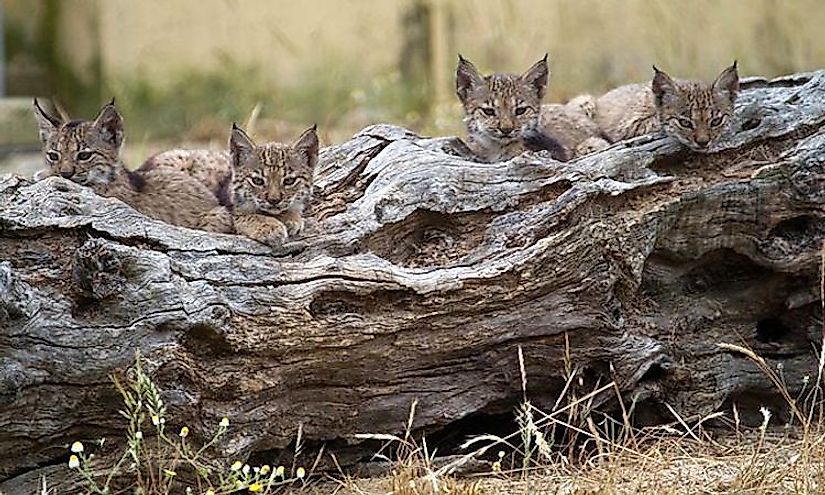
A lynx refers to any one of the four species belonging to the genus Lynx. These animals are medium-sized wild cats that live in parts of North America and Eurasia. There are four species of lynx, the Canadian lynx, Eurasian lynx, bobcat, and the Iberian lynx. Each of these species is discussed below.
4. Bobcat -
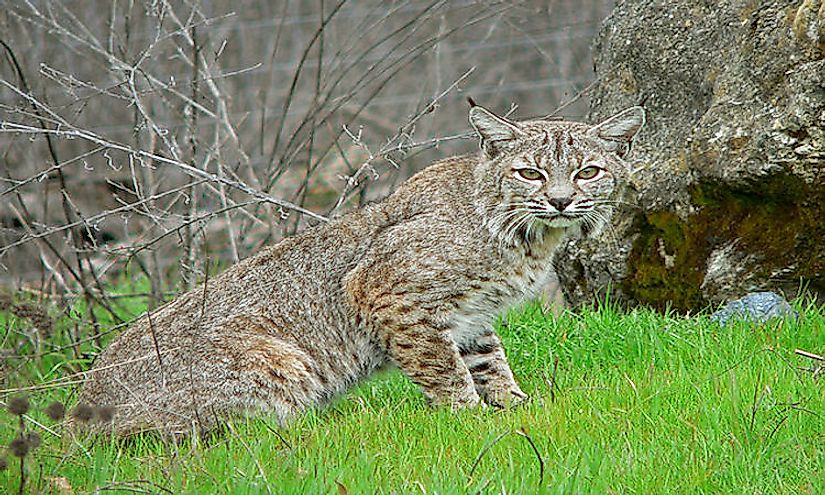
The bobcat (Lynx rufus) is a lynx species that is native to North America. The range of this species stretches from southern Canada to central Mexico. The predator inhabits a wide variety of habitats like semi-desert areas, forest edges, wooded areas, swamplands, etc. The bobcat is characterized by a whiskered face, a gray to brown coat, and black-tufted ears. The bobcat is about twice the size of a domestic cat. It shares some parts of its range with the Canadian lynx.
Rabbits and hares are the most preferred preys of the bobcat, but it also hunts rodents, deer, birds, and insects. The animals are solitary and territorial by nature. The bobcat has been extensively hunted for sport and fur by humans, but unlike many other species, it has managed to survive and maintain a stable population in many areas. However, with large-scale habitat destruction and indiscriminate hunting, the species might enter the list of threatened species in the future.
• L. rufus rufus
• L. r. gigas
• L. r. floridanus
• L. r. superiorensis
• L. r. baileyi
• L. r. californicus
• L. r. mohavensis
• L. r. escuinapae
• L. r. fasciatus
• L. r. oaxacensis
• L. r. pallescens
• L. r. peninsularis
• L. r. texensis
3. Eurasian Lynx -
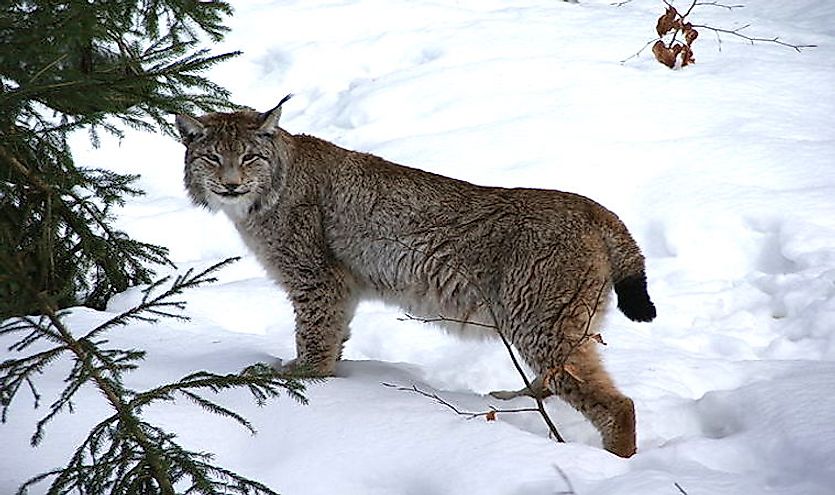
The Eurasian lynx (Lynx lynx) is a lynx that is found in Siberia, parts of Europe and Asia. Populations of this lynx are considered to be stable and widely distributed. Hence, the IUCN classifies the Eurasian lynx as a Least Concern species. It is the largest species of lynx whose length ranges from 80 cm to 130 cm. The animal possesses powerful legs with large furred and webbed paws that act like snowshoes. The Eurasian lynx is also characterized by the presence of black tufts of hair on ears, a short tail with a black tip, and a long white and gray ruff. The color of the coat of the animal changes from reddish-brown in summer to silver-gray or grayish-brown in winter.
The animals prey on smaller mammals and birds in their habitat like hares, marmots, squirrels, rodents, rabbits, etc. The Eurasian lynx populations are protected in many parts of its range since hunting for fur and pleasure had resulted in declining populations which alerted the government to take action.
The Eurasian lynx has several subspecies which are:
• Northern lynx (Lynx lynx lynx)
• Carpathian lynx (Lynx lynx carpathicus)
• Balkan lynx (Lynx lynx balcanicus)
• Caucasian lynx (Lynx lynx dinniki)
• Altai lynx (Lynx lynx wardi)
• Siberian lynx (Lynx lynx wrangeli)
• Turkestan lynx (Lynx lynx isabellinus)
• Baikal lynx (Lynx lynx kozlovi)
• Amur lynx (Lynx lynx stroganovi)
• Sardinian Lynx (Lynx lynx sardiniae)
2. Canada Lynx -
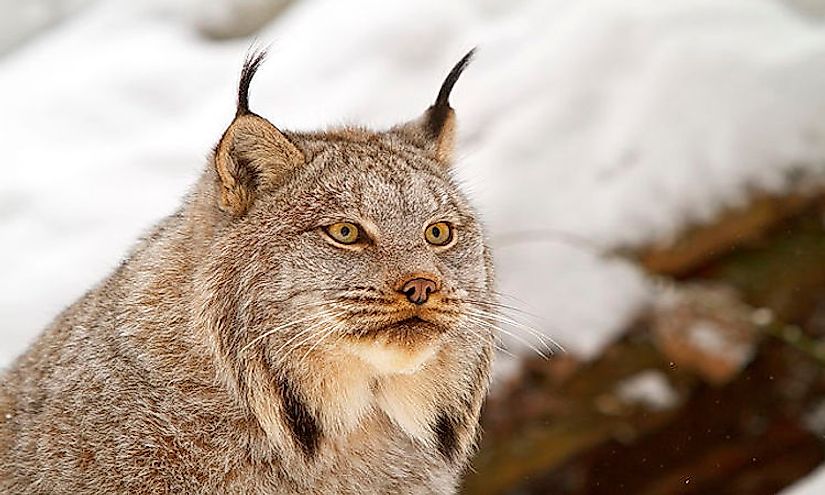
The Canadian lynx (Lynx canadensis) is a mammal belonging to the Felidae family. It is found across Canada and into United State’s Alaska and is also found in some other parts of northern US. The Canadian lynx possesses a silvery-brown coat, tufted ears, ruffed face and is slightly larger than the bobcat in size and nearly twice the size of a domestic cat. The animal is a carnivore which mainly preys on the snowshoe hares found in its habitat. Though the Canada lynx is not yet on the threatened list of IUCN, its populations are steadily declining. The trapping of the animal for fur and habitat loss are the two culprits behind this decrease in number.
Two subspecies of the Canada lynx are recognized: The L. c. mollipilosus and the L. c. subsolanus.
1. Iberian Lynx -
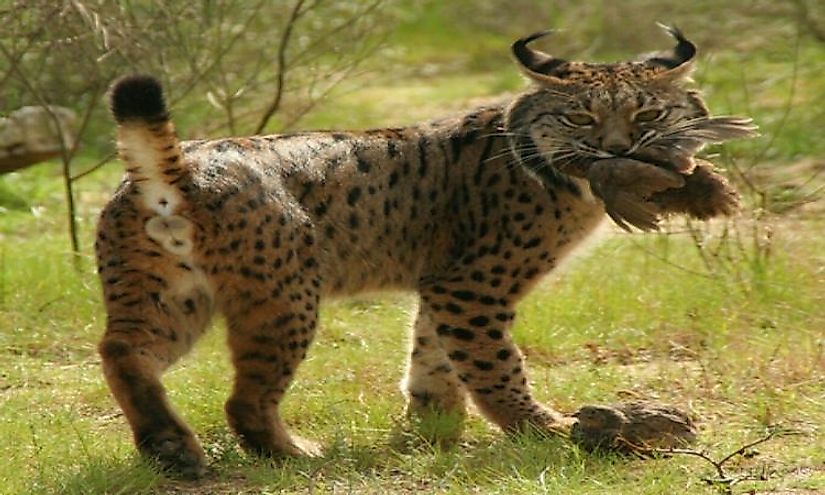
The Iberian lynx (Lynx pardinus) is a lynx species that inhabits the Iberian Peninsula in southwestern Europe. It is the most threatened among all lynx species and is classified as Endangered by the IUCN. The loss of the prey base of these wild cats has resulted in the decline of their populations. Populations of the European rabbit, the primary prey of the Iberian lynx, have drastically declined due to overhunting, disease, poaching, and habitat fragmentation. This, in turn, has had an adverse effect on lynx populations. At the beginning of the 21st century, only about 100 Iberian lynxes were surviving in the wild. By 2012, successful restocking of rabbits, relocation, and re-introduction of Iberian lynxes had resulted in a population growth to 326 individuals. The Iberian lynx also occasionally preys on rodents, deer, ducks, etc. This species of lynx is still extremely vulnerable to threats like poaching, accidental kills by vehicles, kills by feral dogs, persecution by humans, and habitat fragmentation.
How Many Species Of Lynx Live In The World Today?
| Rank | Species | Weight | Length | Height (standing at shoulders) |
|---|---|---|---|---|
| 1 | Eurasian lynx | 18 to 30 kilograms | 81 to 129 centimetres | 70 centimetres |
| 2 | Canada lynx | 8 to 11 kilograms | 80 to 105 centimetres | 48 to 56 centimetres |
| 3 | Iberian lynx | 12.9 kilograms | 85 to 110 centimetres | 60 to 70 centimetres |
| 4 | Bobcat | 7.3 to 14 kilograms | 71 to 100 centimetres | 51 to 61 centimetres |











